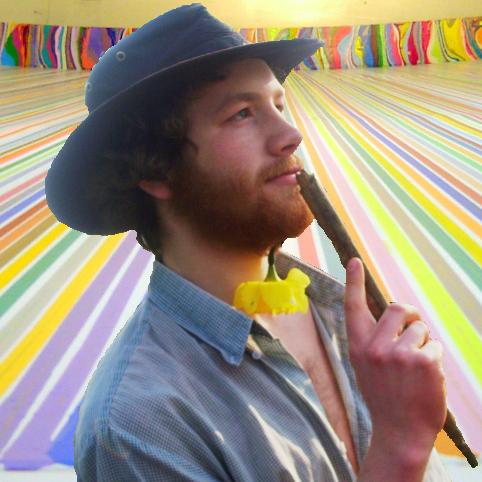 |
Legend has it that Pirithous, a warrior-prince, provoked the Greek hero Theseus to battle, but Theseus was so impressed with his adversary that instead of killing him he befriended him, and they were the most loyal of companions from that day forth. Some years later, Abe Lincoln told us that the best way to destroy an enemy is to make him a friend. It would appear that Sarah Shalgosky, Curator of Warwick University's Mead Gallery, has chosen to adopt a similar course in regard to a certain adversary.
If I were feeling pretentious, I might presume the title of nemesis, but what it boils down to is that the cheeky punk who switched the signs under more than a dozen pieces of artwork a few years back has been swotted over the head with an olive branch in the form of a tentative invitation to the summer 2009 alumni event. I've never known a fist-fight that could survive a hand-shake, and the combined approval of my head of department and the person in charge of all art at Warwick has pulled the rug out from under my sails and taken the wind out of my feet. Without the pseudo-anarchistic thrill of the Swap, I'm just another guy going around putting up notices on behalf of the Mead Art Gallery, only I'm doing it for free.
Having said that, there are still a few paintings I become painfully aware of in my forays into University territory (less frequent since I finished my degree, but I'm working towards my PGCE there nowadays, so I'm not far from my old haunts). An artist by the name of Patrick Heron, for instance, consistently produces paintings that, while somewhat striking, leave something to be desired when it comes to artistic input. My years, and my now amicable relationship with those in charge, have mellowed me, but I would like to put forth the motion that these paintings are not worth the canvas they're smeared upon. I refer you to my rule of thumb: if I could do it, it's not art. A strict rule indeed, if it came from Turner or Rembrandt, but from me you can be sure it's pretty broad. I have doodles drawn by friends that I consider art, but unfortunately, Mr Heron, I feel your talents may lie elsewhere.
So, what is the People's Hero going to do about this latest affront to the art community? Now he's been embraced to the bosom of the Mead Gallery, has he turned soft? Not a bit of it! Granted, I have slightly less free time these days, but I have a much better reason for leaving this one well alone. This is a classic case of art commentators aiming for insightful, tripping over their toes and landing on ludicrously over-analysed. Have a read, and then tell me if you think I could improve on it:
Orange and Lemon with White by Patrick Heron
 |
Patrick Heron spent most of his childhood in Cornwall and then trained at the Slade School of Art between 1937-1939. The Cornish landscape where he lived was influential to his work. He sees the contours of the rocks on the moors and cliffs as having powerful rhythms which he translates into his art. It is interesting to consider whether this painting is constructed with interconnecting coloured shapes creating a flat space, or whether shapes are overlapping each other to create shallow sections which protrude and recede. |
I've examined this painting quite carefully - you can even see the pencil lines (which, incidentally, he's no better at keeping to than most primary school kids), and I'm pretty sure there's nothing more to it than paint on canvas. Perhaps I'm missing a whole dimension to this artwork, but I sincerely hope that whoever came up with the idea of suggesting a link to the rugged Cornish landscape, and pondering whether it's orange on lemon or lemon on orange, wasn't taking himself too seriously.

